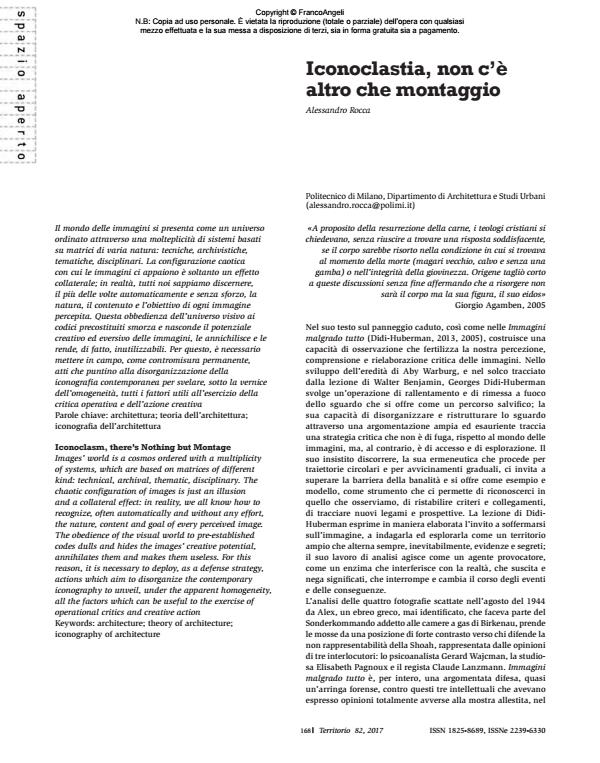Iconoclastia, non c’è altro che montaggio
Titolo Rivista TERRITORIO
Autori/Curatori Alessandro Rocca
Anno di pubblicazione 2017 Fascicolo 2017/82
Lingua Italiano Numero pagine 5 P. 168-172 Dimensione file 161 KB
DOI 10.3280/TR2017-082027
Il DOI è il codice a barre della proprietà intellettuale: per saperne di più
clicca qui
Qui sotto puoi vedere in anteprima la prima pagina di questo articolo.
Se questo articolo ti interessa, lo puoi acquistare (e scaricare in formato pdf) seguendo le facili indicazioni per acquistare il download credit. Acquista Download Credits per scaricare questo Articolo in formato PDF

FrancoAngeli è membro della Publishers International Linking Association, Inc (PILA)associazione indipendente e non profit per facilitare (attraverso i servizi tecnologici implementati da CrossRef.org) l’accesso degli studiosi ai contenuti digitali nelle pubblicazioni professionali e scientifiche
Il mondo delle immagini si presenta come un universo ordinato attraverso una molteplicità di sistemi basati su matrici di varia natura: tecniche, archivistiche, tematiche, disciplinari. La configurazione caotica con cui le immagini ci appaiono è soltanto un effetto collaterale; in realtà, tutti noi sappiamo discernere, il più delle volte automaticamente e senza sforzo, la natura, il contenuto e l’obiettivo di ogni immagine percepita. Questa obbedienza dell’universo visivo ai codici precostituiti smorza e nasconde il potenziale creativo ed eversivo delle immagini, le annichilisce e le rende, di fatto, inutilizzabili. Per questo, è necessario mettere in campo, come contromisura permanente, atti che puntino alla disorganizzazione della iconografia contemporanea per svelare, sotto la vernice dell’omogeneità, tutti i fattori utili all’esercizio della critica operativa e dell’azione creativa
Parole chiave:Architettura; teoria dell’architettura; iconografia dell’architettura
Alessandro Rocca, Iconoclastia, non c’è altro che montaggio in "TERRITORIO" 82/2017, pp 168-172, DOI: 10.3280/TR2017-082027